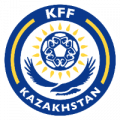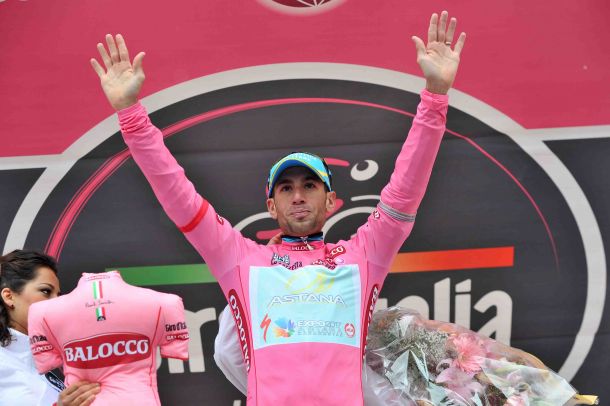The 97th edition of the Giro d'Italia has an international feel to it, with the opening two stages taking place in Northern Ireland and the third stage traveling into the Republic of Ireland. The race features nine summit finishes, with the majority of them coming in the second half of the race. There are three time trials, the opening stage team time trial, a hilly individual time trial on stage twelve, and an individual mountain time trial on stage nineteen. The most difficult stages come in the third week, and if the race for the Maglia Rosa is still tight, then the brutal summit finish on Monte Zoncolan on the penultimate stage will settle affairs
Stage one: Belfast - Belfast 21.7km Team Time Trial
The opening stage team time trial is mostly flat though there is a short steep bump at Stormont, and is more technical in the opening and finishing sections, however the bulk of the course is flat and relatively straight which will suit the more powerful teams. Orica GreenEDGE have targeted this TTT, as sporting director Matt White admitted on the team website “It will be all hands on deck for the TTT in Ireland. We want to take the maglia rosa and of course hold onto it for as long as possible.” With Svein Tuft, Luke Durbridge, Michael Hepburn, Cameron Meyer and Brett Lancaster in their squad, they have a great chance to do just that. With Adriano Malori, Andrey Amador and Jonathan Castroviejo, Movistar should be among the fastest teams, getting Nairo Quintana’s challenge for the Maglia Rosa off to a great start.
Stage two: Belfast - Belfast 219km
The long and flat second stage should end with the first large bunch sprint of the race. The approach to the finish in Belfast is flat and relatively straight, which means that the sprint trains will hit top speed well in advance of the left hand turn leading onto the finishing straight. The turn comes just 300m from the finish line, so whoever is first into the corner will be in prime position to win. Marcel Kittel (Giant-Shimano) is probably the fastest sprinter in the world and starts as the favourite, while Nacer Bouhanni (FDJ) and Elia Viviani (Cannondale) both bring winning form into the race, Bouhanni in particular seems primed to claim his first Grand Tour stage victory. With the majority of the second half of the stage bringing the peloton along the coast road back to Belfast, there is a possibility of strong winds. If echelons should form then all the overall contenders will need to be vigilant, or they will miss the first selection of the race.
Stage three: Armagh - Dublin 187km
The race leaves Northern Ireland and finishes in Dublin and once again the route follows the coast for much of the day. Winds are again a possibility but the stage will most likely end with a second large bunch sprint. This time the final 5km are more technical which makes the run-in more dangerous, and crashes a distinct possibility.
Stage four: Giovinazzo - Bari 112km
The Giro d’Italia has taken a huge amount of criticism in the past for asking too much of the riders, expecting them to make ridiculous transfers between stages and not caring for their welfare. That has changed, and this year the organisers deserve praise for following the trip to Ireland with a rest day, and then this truncated stage, which at just 112km it is exceeding short for a flat stage. The stage largely consists of multiple laps of an 8.3km circuit in Bari. There is a left hand corner onto the finishing straight, leaving just a 350m run to the line, however the riders have no excuse for misjudging it, as they will have passed through the finish eight times prior to the time that matters.
Stage five: Taranto - Viggiano 203km
Stage five forces the riders confront the first climbs of the race. The peloton climbs the Serra di San Chirico, 8km at 4.2%, a little over half way into the stage before finishing with the double climb to Viggiano. The finish line is a little shy of the summit, so the first time around the riders face an 8.1km 4.3% climb, while the second ascent, which comes after a 6km descent, is 6.8km at 3.5%. The climb is steepest towards the top with the gradient reaching 8% in the final 500m, which should see a flurry of action as riders kick for the line. It’s certainly not difficult enough to automatically force an elite selection, but the first summit finish of the race could see some sort of GC skirmish as the favourites begin to size each other up. However victory on the day is more likely to go to a fast finishing climber like Diego Ulissi (Lampre-Merida).
Stage six: Sassano - Montecassino 247km
The second longest stage of the race sees the peloton travelling northwards up the eastern side of Italy, past Napoli to an uphill finish at Montecassino, marking the 70th anniversary of the World War II battles. There is a steep section at the start of the climb, but at just 8.65km, an average of 5.2%, and with a final kilometre at a shallow 3%, this is not one of the more testing climbs to feature in the race. So once again this finish should produce little more than a skirmish between the elite riders, instead it should suit some of the faster finishers who can climb.
Stage seven: Frosinone - Foligno 211km
With climbing right from the start as well as a number of hills in the latter part, stage seven offers first real chance for a breakaway to succeed. However, despite a profile that suits the break the race is likely to come back together on the run-in to the finish in Foligno. Marcel Kittel has likely dominated the early sprints, but the big German sprinter will struggle on the Valico della Somma, 6.7km at 4.9%, which comes inside the final 45km. So this stage gives the more versatile sprinters their best chance of victory so far, which should ensure their teams work to close down any break. There are three corners in final 2km, but the finish should be contested by a smaller bunch so there will be less congestion.
All stage profiles come from the Giro website http://www.gazzetta.it









































